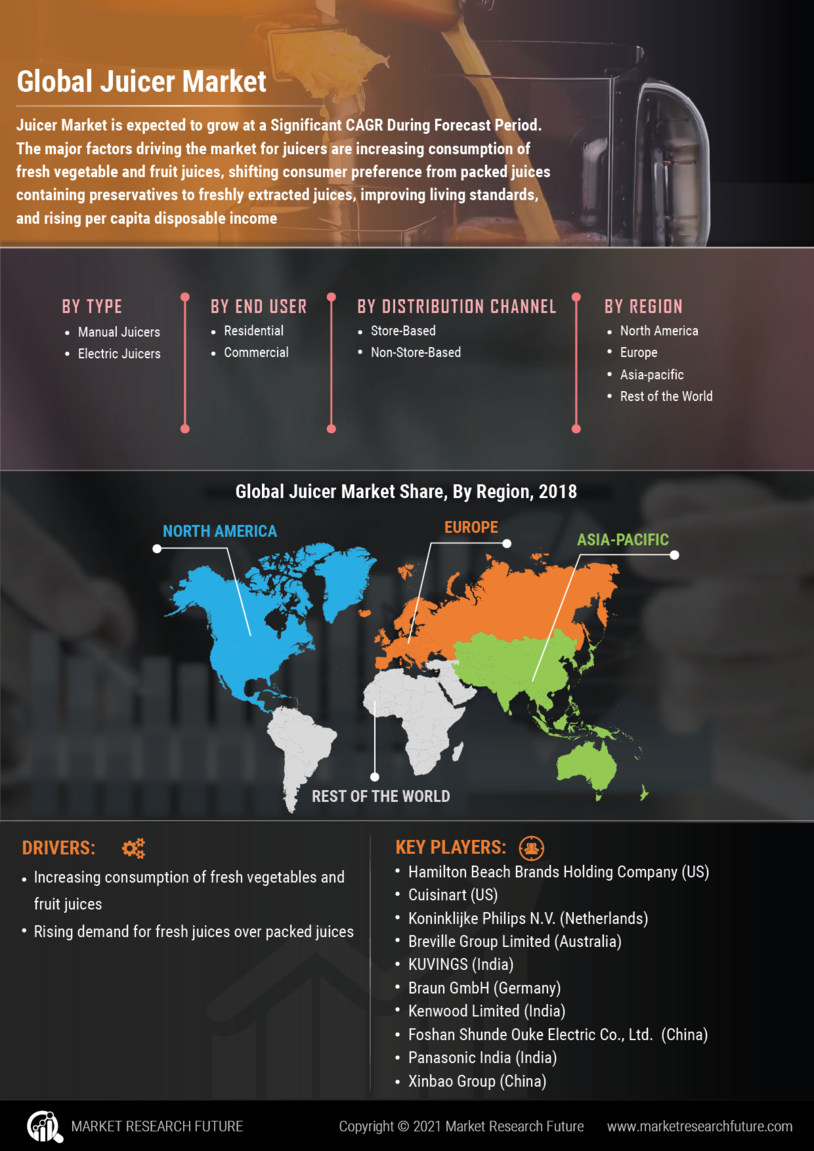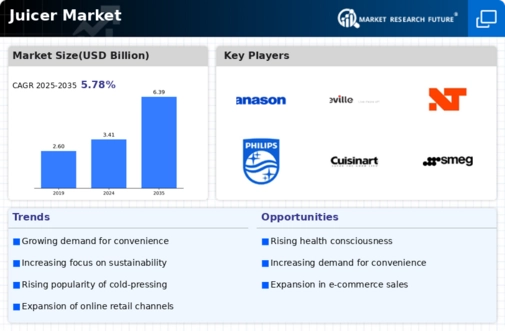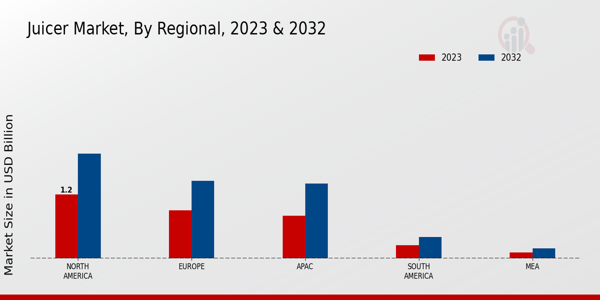Diverse Product Offerings
The Global Juicer Market Industry benefits from a wide array of product offerings that cater to varying consumer preferences. Manufacturers are increasingly introducing specialized juicers designed for specific fruits and vegetables, which enhances the overall juicing experience. This diversification not only attracts health-conscious consumers but also appeals to culinary enthusiasts who seek to experiment with different flavors and textures. The availability of both manual and electric juicers allows consumers to choose products that align with their lifestyle and budget. This variety is expected to contribute to the market's growth, as consumers are more likely to invest in products that meet their specific needs.
Market Growth Projections
The Global Juicer Market Industry is poised for substantial growth, with projections indicating a rise from 3.41 USD Billion in 2024 to 6.39 USD Billion by 2035. This trajectory suggests a robust expansion, driven by various factors including health trends, technological advancements, and consumer preferences. The anticipated compound annual growth rate of 5.87% from 2025 to 2035 reflects the increasing adoption of juicing as a lifestyle choice. As consumers continue to prioritize health and wellness, the market is likely to witness a surge in demand for innovative juicing solutions, further solidifying its position in the global appliance market.
Technological Advancements
Technological innovations play a pivotal role in shaping the Global Juicer Market Industry. The introduction of advanced juicing technologies, such as cold press and masticating juicers, enhances juice extraction efficiency and nutrient retention. These innovations cater to the growing consumer demand for high-quality, nutrient-rich juices. As a result, manufacturers are investing in research and development to create more efficient and user-friendly juicing appliances. This focus on technology is likely to drive market growth, with projections indicating a compound annual growth rate of 5.87% from 2025 to 2035. The integration of smart technology in juicers further aligns with the modern consumer's lifestyle.
Rising Health Consciousness
The Global Juicer Market Industry experiences a notable surge in demand driven by increasing health consciousness among consumers. As individuals become more aware of the benefits of fresh juices, the market is projected to reach 3.41 USD Billion in 2024. This trend is particularly evident in urban areas where busy lifestyles prompt a preference for convenient, nutritious options. Consumers are increasingly seeking products that offer health benefits, such as detoxification and enhanced immunity, thereby propelling the growth of the juicer market. The emphasis on natural ingredients and organic produce further supports this trend, indicating a shift towards healthier living.
Growing E-commerce Platforms
The rise of e-commerce platforms significantly influences the Global Juicer Market Industry by providing consumers with convenient access to a wide range of juicing products. Online shopping has become increasingly popular, allowing consumers to compare products, read reviews, and make informed purchasing decisions from the comfort of their homes. This trend is particularly beneficial for niche juicer brands that may not have a strong presence in traditional retail outlets. As e-commerce continues to expand, it is anticipated that the market will see increased sales, contributing to the projected growth to 6.39 USD Billion by 2035. The convenience and accessibility of online shopping are likely to drive consumer engagement.
Consumer Education and Awareness
Consumer education and awareness initiatives are crucial drivers of the Global Juicer Market Industry. As more information becomes available regarding the health benefits of juicing, consumers are becoming increasingly informed about the advantages of incorporating fresh juices into their diets. This awareness is often fostered through social media, health blogs, and community workshops, which promote the nutritional value of fresh juices. Consequently, consumers are more inclined to purchase juicers to create their own beverages at home. This trend not only supports market growth but also encourages a lifestyle shift towards healthier eating habits, thereby enhancing the overall demand for juicing appliances.






















